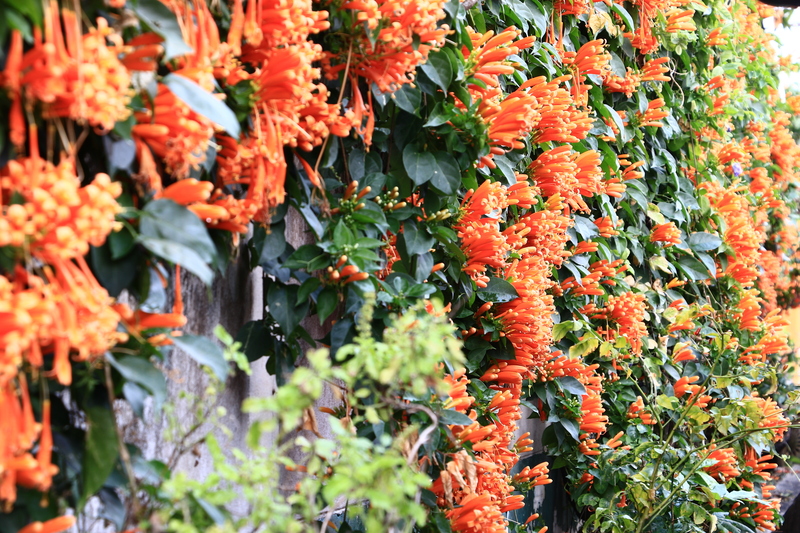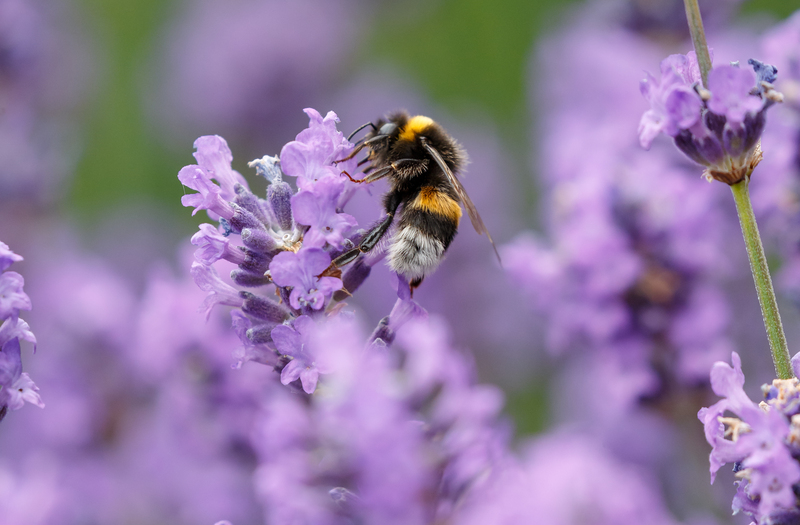Achieve Orchid Excellence with Practical Tips
Posted on 13/08/2025
Achieve Orchid Excellence with Practical Tips
Orchids--graceful, captivating, and sometimes a little mysterious--hold a special place in the hearts of plant lovers worldwide. Yet, while their exotic appeal is undeniable, achieving true orchid excellence in your home or garden may seem daunting. With a combination of practical orchid care tips, attention to detail, and a genuine passion for gardening, anyone can enjoy thriving orchids that reward with prolonged bloom and robust growth.
In this comprehensive guide, you'll uncover actionable strategies to nurture every facet of your orchid's well-being. From mastering watering techniques to understanding light requirements and conquering common problems, you'll find the practical advice you need to achieve orchid excellence.
Understanding the Basics of Orchid Care
Before diving into specialized tips, it's essential to grasp the core principles of orchid care. Orchids, though varied in species, generally share similar requirements for healthy growth. Let's explore the foundational aspects first:
- Light: Most orchids thrive in bright, indirect sunlight. Direct sun may scorch delicate leaves, while too little light can hinder blooming.
- Water: Orchids prefer to dry slightly between waterings. Overwatering is a common mistake.
- Humidity: Many orchids are native to tropical climates and require higher humidity than typical houseplants.
- Temperature: Consistent, moderate temperatures (60-80?F) work best for most species.
- Air Circulation: Good airflow helps prevent fungal and bacterial issues.
With these basics in place, you're ready to dive deeper and truly achieve excellence with your orchid plants.

Choosing the Right Orchid Species
There are over 25,000 species and more than 100,000 hybrids of orchids. While this abundance brings diversity, it can also overwhelm beginners. For home growers and those wanting reliable success, focus on easy-to-care-for types:
- Phalaenopsis (Moth Orchid): Popular for their long-lasting blooms and adaptability, ideal for beginners.
- Dendrobium: Hardy, with upright canes and vibrant flowers.
- Cattleya: Renowned for fragrant, showy blooms and moderate care requirements.
- Oncidium: Known as "dancing lady" orchids, they offer sprays of charming small flowers.
If you're new to orchids, starting with these species increases your chance to achieve orchid excellence early on. Always check the specific needs of your orchid variety to optimize results.
Mastering the Art of Watering
Watering is the most crucial and, at times, challenging aspect of successful orchid culture. Incorrect watering can lead to root rot, fungal infections, or dehydration. Here are practical guidelines for optimal results:
- Check the Medium: Insert your finger about an inch into the potting medium. If it feels dry, it's time to water.
- Use Lukewarm Water: Orchids prefer water at room temperature. Avoid cold or hot water.
- Avoid Overwatering: Water the orchid thoroughly, ensuring excess drains out. Never let the pot sit in accumulated water.
- Adjust for Season: During active growth (spring/summer), water more frequently. In dormancy (fall/winter), reduce the frequency.
Tip: Use rainwater, distilled, or filtered water to avoid mineral buildup on your orchid's roots and leaves, helping you achieve the healthiest orchids.
Lighting Your Orchids for Maximum Blooms
To achieve true orchid excellence, perfecting lighting conditions is essential. Most orchids require:
- Bright, indirect sunlight: Place orchids near east or south-facing windows with filtered light.
- Avoid direct midday sun: Use sheer curtains or blinds to diffuse harsh rays, especially in summer.
- Artificial lights: For spaces with insufficient natural light, use grow lights with a full spectrum. Aim for 12-16 hours of light daily, depending on the species.
If you notice yellowing or reddening leaves, assess the lighting. Move your orchid or adjust artificial lights if needed.
Signs Your Orchid Needs More Light
- Dark-green, limp leaves
- Lack of blooms or bud drop
- Slow or halted growth
Telltale Signs of Too Much Light
- Yellowing or scorched leaves
- Leaves develop red or brown spots
- Wilting or folding foliage
The Perfect Orchid Potting Mix and Repotting
Orchids need specialized growing media for optimal root health. Unlike most houseplants, they dislike standard potting soil. To achieve orchid excellence at home, use one of the following mixes:
- Bark-based mix: Promotes airflow and drains quickly--ideal for most epiphytic orchids.
- Sphagnum moss: Retains more moisture for young or demanding orchids but may need more frequent repotting.
- Perlite or charcoal: Often added to enhance drainage and prevent decomposition.
Repotting Tips:
- Repot every 12-24 months, preferably after flowering.
- Trim away dead roots and remove any decomposed mix.
- Choose a new pot one size up if necessary, with ample drainage holes.
Repotting is an opportunity to inspect your orchid's root health and ensure long-term vitality.
Essential Orchid Fertilizer Strategies
Orchids, though stunning, are light feeders. However, a sensible fertilizing schedule makes a major difference for lush foliage and repeat blooming.
- Use a specialized orchid fertilizer: Choose balanced or bloom-boosting formulas, diluted to half strength.
- "Weekly, weakly" approach: Feed orchids with weak fertilizer solution every 1-2 weeks during the active growing period.
- Flush occasionally: Rinse pots monthly with plain water to prevent salt buildup.
- Skip during dormancy: Reduce or stop fertilizing when growth slows or during rest periods.
Don't overfeed! Excess nutrients can burn delicate roots and hinder your quest to achieve orchid growing success.
Temperature & Humidity Secrets for Vibrant Orchids
Temperature and humidity are cornerstones of orchid care excellence. Orchids typically enjoy:
- Daytime temperatures: 65-80?F (18-27?C)
- Nighttime: 55-65?F (13-18?C)
- Humidity: 40-70%, depending on the species
Practical ways to boost humidity and regulate temperature include:
- Use a humidity tray: Fill a shallow tray with pebbles and water; place pots above the waterline to increase local humidity.
- Group plants together: Clustering orchids creates a microclimate with naturally higher humidity.
- Use a room humidifier: Maintain steady moisture in dry environments or heated homes.
- Monitor with a hygrometer: Ensure your growing area stays within the optimal range.
Keep orchids away from cold drafts, air conditioners, and radiators to maintain consistent conditions.
Air Circulation and Pest Prevention
Good airflow is essential not only for healthy orchids but also for preventing pests and diseases that can undermine your efforts at orchid cultivation excellence. Here's how you can manage air and combat pests:
- Fan it out: Use a low-speed fan nearby, especially in humid rooms, to reduce fungal risks.
- Inspect leaves and roots regularly: Spot signs of spider mites, mealybugs, aphids, and scale early.
- Wipe leaves: Use a damp cloth or gentle neem oil solution to clean foliage and deter pests.
- Isolate new plants: Quarantine new orchids for two weeks before adding to your collection, minimizing disease transfer.
Common Orchid Pests & Solutions:
- Spider Mites: Fine webbing under leaves; treat with insecticidal soap or neem oil.
- Mealybugs: Cotton-like clusters on leaves; dab with isopropyl alcohol-soaked cotton swabs.
- Aphids: Green, black, or white insects on new growth; rinse with water or use gentle insecticides.
Encouraging Reblooms and Long-Term Excellence
Every orchid grower wants a reliable rebloom. Success involves patience and consistency, but a few targeted tips help coax your orchid to reward you with fresh flowers, time and time again:
- Proper rest after blooming: Many orchids need a short dormant or rest period before sending up fresh spikes.
- Give a "chill" treatment: For species like Phalaenopsis, cooler nighttime temperatures for a month can induce new flower formation.
- Don't cut green spikes: After blooming, only trim back spikes after they turn brown. Green ones may rebloom from side branches.
- Maintain care routines: Continue with balanced nutrition, watering, and light throughout the year.
With these practices, you'll be enjoying blooms all year round--the hallmark of true orchid excellence.
Solving Common Orchid Problems
No journey toward orchid care mastery is complete without facing (and solving) a few bumps in the road. Knowing what to watch for--and how to act--keeps your plants in top condition:
- Wrinkled leaves: Usually the result of under-watering or root damage. Gently repot and adjust your watering schedule.
- Root rot: Occurs from excessive moisture or poor drainage. Remove affected roots and repot into fresh, well-draining medium.
- Lack of blooms: Insufficient light, lack of dormancy, or poor nutrition are common culprits. Adjust accordingly and be patient--orchids can be slow to recover.
- Yellowed leaves: Overexposure to sunlight or aging leaves (natural attrition). Move to indirect light or prune old growth.
- Leaf spots or discoloration: Often fungal or bacterial. Remove affected areas and treat with fungicide.
When troubleshooting, patience is vital. It may take several weeks before improvements are visible, but diligence pays off as you refine your orchid growing techniques.
Bonus Section: Orchid Display & Styling
Achieving orchid excellence isn't only about healthy plants--it's about showmanship, too! Display your collection beautifully with these creative tips:
- Orchid baskets: Elevate orchids off flat surfaces using hanging baskets or wall-mounted holders for a dramatic effect.
- Group arrangements: Combine multiple orchid varieties in stylish clusters for impact and easier humidity maintenance.
- Decorative pots: Choose attractive, yet functional, containers that provide ample drainage and complement foliage or flower color.
- Tabletop features: Place orchids as living centerpieces in dining or living areas for an instant room refresh.
Be creative with your displays to inspire both admiration and motivation on your pursuit of superior orchid culture.

The Orchid Enthusiast's Checklist
Ready to achieve orchid excellence? Don't forget these key points:
- Choose easy-care varieties for consistency and enjoyment.
- Master watering--when in doubt, less is better!
- Provide light levels tailored to your orchid's needs.
- Use the right potting mix for healthy roots.
- Feed regularly but sparingly.
- Monitor temperature, humidity, and airflow vigilantly.
- Inspect for pests and diseases frequently.
- Encourage reblooms with a seasonally responsive care routine.
Conclusion: Achieve Lasting Orchid Excellence
Growing orchids can be a riveting, rewarding hobby--one that offers vibrant rewards with every bloom. By embracing these practical orchid care tips and remaining attentive to your plants' subtle cues, you can transform even modest orchids into spectacular showstoppers. Remember: consistency, patience, and a touch of creativity are all you need to achieve orchid excellence in every season.
Start today with these proven strategies, and watch your orchid collection flourish like never before!

